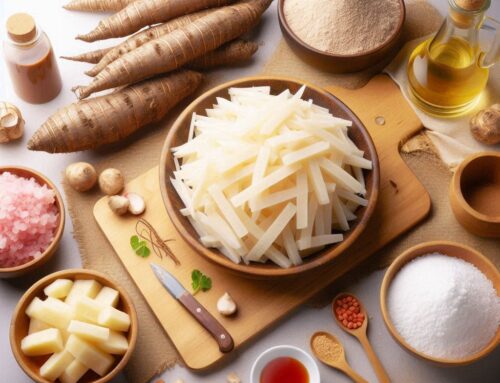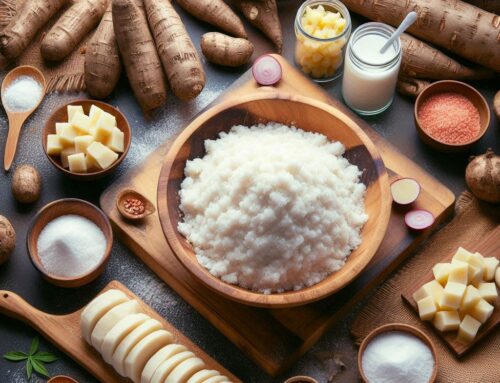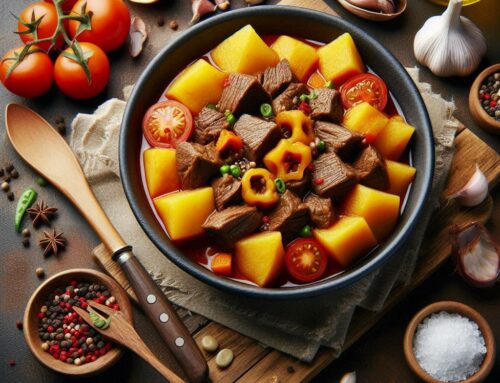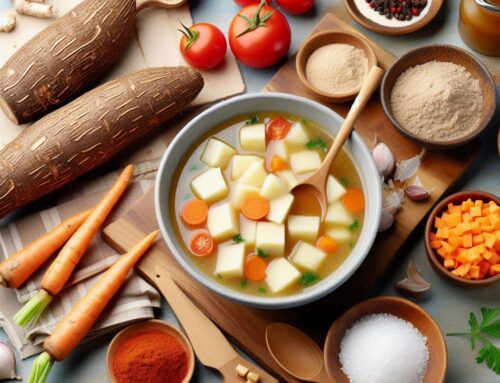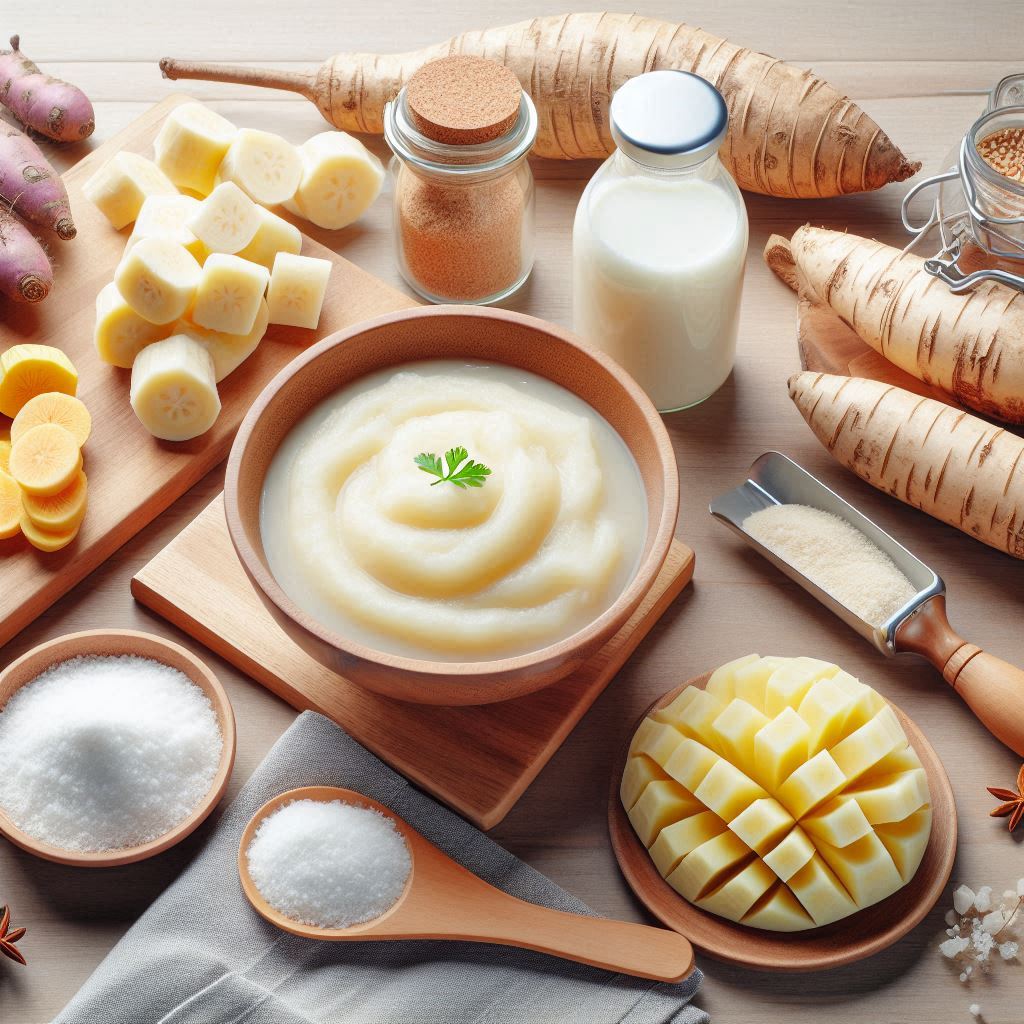
Introduction: Why Choose DIY Baby Food and the Benefits of Cassava
Choosing to prepare DIY baby food can be a rewarding decision for parents who prioritize healthy eating for their little ones. One of the key advantages of homemade baby food is the ability to control the ingredients, ensuring that your child receives nutritious baby meals free from unnecessary additives and preservatives. Among the many options available, cassava stands out as a particularly beneficial ingredient.
Cassava, a root vegetable rich in carbohydrates, provides an excellent source of energy essential for growing babies. It also contains important vitamins and minerals such as vitamin C, folate, and magnesium. These nutrients play crucial roles in supporting immune function and promoting healthy development.
Incorporating cassava into your baby’s diet can be both simple and versatile. Its mild flavor pairs well with a variety of other fruits and vegetables, allowing you to create diverse meal options that your child will enjoy. By opting for DIY baby food featuring cassava, you are not only offering nutritious meals but also introducing your baby to new flavors and textures that can encourage adventurous eating habits as they grow.
Understanding Cassava: Nutritional Value and Health Benefits for Babies
Cassava, a starchy root vegetable, is a staple food in many parts of the world and offers several nutritional benefits that make it an excellent choice for introducing to your baby’s diet. Understanding cassava’s nutrition facts can help parents make informed decisions about incorporating this versatile food into their child’s meals.
Cassava is rich in carbohydrates, providing a significant energy source crucial for growing babies. It also contains important vitamins such as vitamin C, which supports the immune system and aids in the absorption of iron. While cassava does not boast high protein content, its vitamin profile can complement other foods to create a balanced diet.
One of the notable health benefits of cassava is its fiber content. As a fiber-rich food, it aids in digestion and helps maintain regular bowel movements for babies who are transitioning to solid foods. This can be particularly beneficial in preventing constipation and promoting gut health.
When preparing cassava for your baby, it’s essential to cook it thoroughly to eliminate naturally occurring compounds that can be harmful if consumed raw. By doing so, you ensure that your little one receives all the nutritional advantages without any risks.
Incorporating cassava into your baby’s meals not only diversifies their palate but also provides them with essential nutrients that support overall growth and development. As always, consulting with a pediatrician before introducing new foods is recommended to tailor dietary choices to your baby’s specific needs.
Essential Tools and Ingredients Needed to Make Cassava Puree at Home
Creating homemade cassava puree can be a rewarding experience, especially when you have the right tools and ingredients at your disposal. To begin with, the essential baby food maker tools include a high-quality blender or food processor, which is crucial for achieving the smooth texture that makes purees perfect for infants. A steamer basket is another valuable piece of cooking equipment for baby food, allowing you to gently steam the cassava and preserve its nutrients.
When it comes to the cassava puree ingredients list, simplicity is key. Start with fresh cassava roots as your main ingredient. You’ll also need clean water for steaming and blending. Some parents like to add a touch of breast milk or formula to achieve a creamier consistency, but this is optional depending on your baby’s dietary needs.
By combining these tools and ingredients, you can easily prepare nutritious cassava puree at home that’s both delicious and healthy for your little one. Remember that having the right equipment not only simplifies the process but also ensures that you’re providing safe and wholesome meals tailored specifically for your baby’s developmental stage.
A Step-by-Step Guide to Preparing Cassava Puree Safely and Effectively
Preparing cassava puree for your baby can be a rewarding experience, offering a nutritious and delicious addition to their diet. This step-by-step guide will walk you through the process safely and effectively.
**Step 1: Selecting the Right Cassava**
When learning how to make cassava puree, start by choosing fresh, firm cassava roots. Look for ones with smooth skin and without any blemishes or soft spots. Freshness is key to ensuring the best flavor and nutritional value.
**Step 2: Peeling and Cutting**
Carefully peel the thick outer skin of the cassava using a sharp knife or vegetable peeler. Once peeled, cut the cassava into small chunks to facilitate even cooking. Remember that proper peeling is crucial as it removes any toxins present in the outer layers.
**Step 3: Boiling**
Place the cassava chunks in a pot of water, ensuring they are fully submerged. Bring the water to a boil over medium heat and let it cook until the pieces are tender—this usually takes about 20-30 minutes. Boiling not only softens the cassava but also helps eliminate any residual toxins.
**Step 4: Mashing or Blending**
Once cooked, drain the water and allow the cassava pieces to cool slightly. For DIY baby puree recipes, transfer them into a blender or food processor. Blend until smooth, adding small amounts of water if necessary to achieve your desired consistency.
**Step 5: Storing Safely**
If making larger batches of baby food puree to use later, portion out servings into airtight containers or ice cube trays for easy storage in your freezer. This ensures you have ready-to-use portions whenever needed while maintaining freshness.
By following this step-by-step guide to making baby food like cassava puree, you can confidently prepare wholesome meals that contribute positively to your baby’s growth and development while ensuring safety throughout each stage of preparation.
Creative Recipe Variations: Mixing Cassava with Other Nutritious Foods
When it comes to crafting delightful and nutritious baby food, creativity is key. One versatile ingredient that can serve as a base for countless combinations is cassava. Known for its mild flavor and smooth texture, cassava puree can be easily mixed with other nutrient-rich foods to create delectable baby food recipe ideas.
For parents looking to introduce their little ones to a variety of flavors while ensuring balanced nutrition, mixing purees for babies is an excellent strategy. Start by combining cassava puree with sweet potatoes or carrots. These vibrant veggies not only add a touch of sweetness but also pack in essential vitamins like beta-carotene.
Another nutritious combination with cassava puree involves blending it with fruits such as apples or pears. These fruits bring natural sweetness and fiber, making the meal both tasty and digestive-friendly. For protein-rich options, consider adding well-cooked lentils or chickpeas into the mix; they provide necessary proteins and minerals crucial for your baby’s growth.
Experimenting with herbs like basil or parsley can introduce subtle new tastes without overwhelming your baby’s palate. Remember to keep textures smooth initially before gradually introducing more complex consistencies as your baby grows.
Ultimately, these creative recipe variations offer a wonderful opportunity to expand your baby’s diet while ensuring they receive vital nutrients from diverse sources.
Tips on Storing Homemade Baby Food Safely and Conveniently
When it comes to storing homemade baby food safely and conveniently, a few simple tips can ensure your little one enjoys fresh and nutritious meals. First, always start with clean hands, utensils, and containers to prevent contamination. When preserving homemade purees like cassava, it’s essential to cool them quickly after cooking to maintain their quality.
Freezing is an excellent method for storing DIY baby food safely. To freeze cassava puree efficiently, portion it into ice cube trays or small freezer-safe containers. This not only helps in maintaining freshness but also allows you to thaw just the right amount needed for each meal. Remember to label each container with the date of preparation so you can keep track of its freshness.
When you’re ready to serve the puree, thaw it in the refrigerator overnight or use a warm water bath for quicker defrosting. Avoid using a microwave as it might cause uneven heating and destroy some nutrients. By following these tips on preserving homemade purees, you can ensure that your baby receives safe and delicious meals every time.
Conclusion: The Joy of Making DIY Baby Food with Love and Care at Home
In conclusion, making DIY baby food at home offers a multitude of benefits that extend beyond mere nutrition. The process allows parents to have complete control over what goes into their child’s meals, ensuring that each spoonful is packed with fresh, wholesome ingredients tailored to the baby’s specific dietary needs and preferences. By preparing baby food at home, parents can introduce a variety of flavors and textures, fostering an adventurous palate from an early age.
Moreover, the act of making homemade baby food is often seen as a labor of love—a way for caregivers to connect with their little ones through the nurturing process. This hands-on approach not only provides peace of mind about the quality and safety of the food being served but also offers an opportunity for families to bond over shared meal preparation experiences.
Ultimately, whether you’re pureeing sweet potatoes or mashing avocados, creating DIY baby food can be a rewarding endeavor filled with joy and satisfaction. It empowers parents to nourish their children with love and care while instilling healthy eating habits that can last a lifetime.



